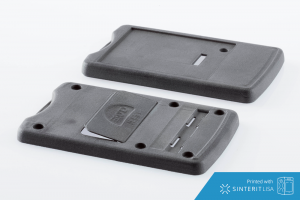![]() Tel:+86 135 7086 9158
Tel:+86 135 7086 9158
![]() Tel:+86 135 7086 9158
Tel:+86 135 7086 9158
PRODUCT LIST


Thanks to prototyping on SLS Sinterit Lisa printer, the company ELEcTOR produced voting pilot in a faster, easier and better way. The final product is now used to pass resolutions in Government institutions, make decisions at Supervisory Board meetings, manage tests and questionnaires during lectures and conferences.
ELEcTOR is specialising in wireless voting systems for picking votes, automatic calculating of votes after which the results are immediatelly presented in graphical visuals. Company wanted to have the device which would not only be useful and reliable but also attractive, from the design point of view so they decided to make some prototypes in 3D printing with Sinterit Lisa in order to prepare the best voting pilot in a faster and better way.
“Our goal was to create the best possible physical case for handheld mobile voting terminals. We wanted to incorporate years of experience in building, modifying and using third-party components in production process, while maintaining low cost footprint.

In the past we used time-consuming adaptation, cutting, drilling and screwing of cases available on the market. Still the result was lacking in ergonomics and looks. When we decided to create a new case we were unsure of some aspects of the design, e.g. proportions and shape, the way it will feel when gripped in hand, placement and size of mounting for ribbon, labels, etc.
It was also important to minimize time and manual operations involved in production process. We came up with several specially crafted structures and slits on the case, which make it easy to integrate together with our IC board, keyboard, battery slot and cover, LEDs, etc.
The scale of our production implied necessity to create plastic injection mould and considering its high cost we had to carefully prototype the model using cheaper technologies.” ELEcTOR Company
Solution
The first step of the project was to create a 3D model of the new case and involved several iterations of design on a computer. The next stage was to 3D print the case and get the real feeling of physical object’s features. ELEcTOR made additional 4 iterations of 3D printing with Sinterit Lisa, optimizing the details of the design. Once they were satisfied with shape and structure of the new case they could proceed to create injection mould for it.
3D printing allows to significantly shorten the time of the designing, testing and developing stages. That’s mainly due to the possibility of making and improving prototypes in-house in a matter of hours. Rapid prototyping with SLS Sinterit 3D printing allows ELEcTOR company more revisions in less time, so they can test thoroughly while still reducing time to market. Know exactly how their product will look and perform before investing in tooling.
The results of the 3D voting terminal prototype were:
Copyright © Shenzhen Airboat Technology Co., Ltd. All rights reserved 【Backstage management】